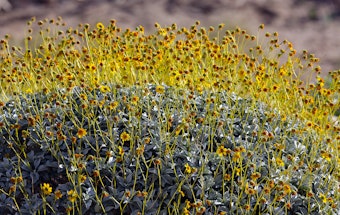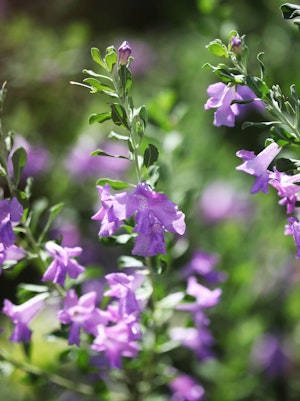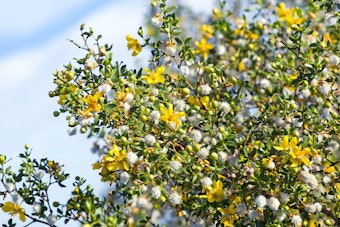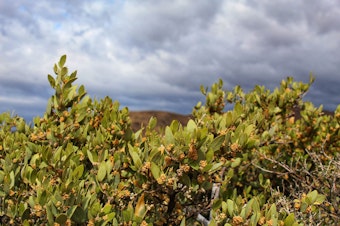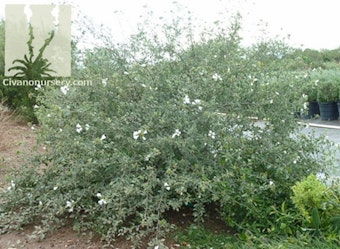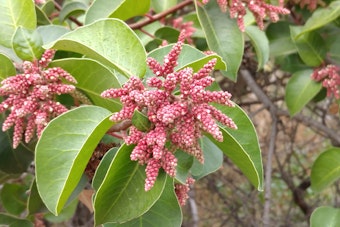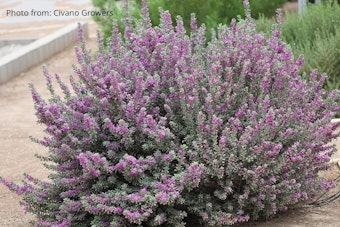 Be Inspired Blog - Arizona
Be Inspired Blog - Arizona

Plants that Thrive with Little Water
If you are looking to create a landscape that's well suited to our local environment, here’s a list of plants that need little water to thrive, once established...
Low-Water-Use Outdoor Plants
People think that in order to have a beautiful and enviable garden they need to have their sprinklers and water hoses running all day. However, you can enjoy a flourishing front and back yard with low-water-use plants. Check out these outdoor plants that require little water and maintenance once established. Remember, these plants need to become established and acclimated to your garden before they become drought tolerant.
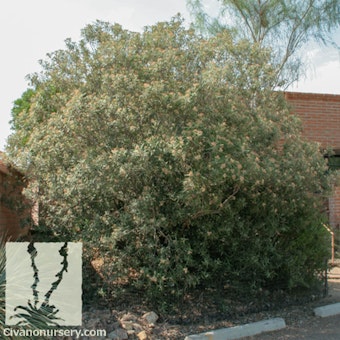
Arizona Rosewood
- Uses: Arizona Rosewood (Vauquelinia californica) is often used as a screening or hedge plant due to its dense foliage.
- Growth Habit: Evergreen shrub or small tree that grows up to 10-15 feet tall.
- Color: Glossy green leaves.
- Fruit: Rarely produces fruit; small, woody capsules.
- Soil: Well-draining; adaptable to various soil types.
- Light: Full sun to partial shade.
- Water: Drought tolerant once established.
- Pruning: Prune to shape in the spring if necessary.
- Hardiness: USDA zones 7-11.
- Other: Low maintenance and good for xeriscaping.
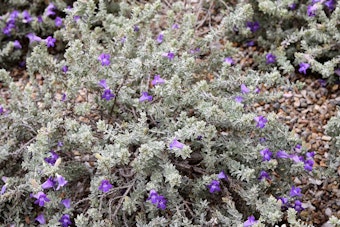
Blue Bells
- Uses: Blue Bells (Eremophila hygrophana) is popular for its drought tolerance and vibrant flowers, it's excellent in rock gardens, as ground cover, or in xeriscape designs.
- Growth Habit: Low-growing, evergreen shrub that reaches about 2 feet in height and spreads 2 to 4 feet wide.
- Color: Attractive silvery-green foliage with striking blue to violet flowers.
- Fruit: Rarely produces significant fruit.
- Soil: Prefers well-draining, sandy soils; tolerant of poor soils.
- Light: Thrives in full sun, can tolerate some light shade.
- Water: Highly drought-tolerant; water infrequently once established, more frequently during the hottest months if needed.
- Pruning: Light pruning can be done to maintain shape and encourage denser growth.
- Hardiness: Suitable for USDA zones 9-11; very heat-tolerant, perfect for desert climates.
- Other: Blooms mainly in the spring but can have sporadic blooms throughout the growing season, especially with occasional watering.
Brittlebush
- Uses: Brittlebush (Encelia farinosa) is used in native landscaping, erosion control, and for its resin.
- Growth Habit: Shrub, typically 2-5 feet tall.
- Color: Silver-gray foliage with yellow daisy-like flowers.
- Fruit: Small achene.
- Soil: Well-draining, sandy or rocky soils.
- Light: Full sun.
- Water: Extremely drought tolerant.
- Pruning: Minimal; prune to remove any dead branches.
- Hardiness: USDA zones 8-11.
- Other: Attracts pollinators such as bees and butterflies.
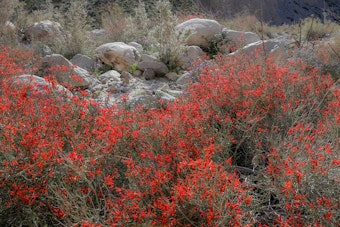
Chuparosa
- Uses: Chuparosa (Justicia californica) is attractive to hummingbirds; used in native plant gardens.
- Growth Habit: Shrub growing up to 4 feet tall.
- Color: Green stems with red to orange tubular flowers.
- Fruit: Small, inconspicuous fruit.
- Soil: Well-draining.
- Light: Full sun to partial shade.
- Water: Low water needs; drought tolerant.
- Pruning: Prune to shape and maintain size.
- Hardiness: USDA zones 9-11.
- Other: Deciduous or semi-evergreen depending on water availability.
Chihuahuan Rain Sage
- Uses: Purple Rain Chihuahuan Rain Sage (Leucophyllum x zygophyllum 'Purple Rain') is an ornamental shrub known for its vibrant flowers and foliage.
- Growth Habit: Compact shrub, usually 3-5 feet tall.
- Color: Silvery foliage with deep purple flowers.
- Fruit: Rarely produces fruit.
- Soil: Well-draining, low organic content.
- Light: Full sun.
- Water: Drought tolerant; infrequent but deep watering.
- Pruning: Light pruning to shape.
- Hardiness: USDA zones 8-11.
- Other: Flowers appear in response to humidity and rain.
Creosote Bush
- Uses: Creosote Bush (Larrea tridentata) is used in native landscaping, and for medicinal purposes.
- Growth Habit: Evergreen shrub, can reach up to 8 feet in height.
- Color: Waxy green leaves with yellow flowers.
- Fruit: Capsule containing many seeds.
- Soil: Very well-draining; tolerates poor soils.
- Light: Full sun.
- Water: Very drought tolerant.
- Pruning: Generally not needed; can be pruned for shape.
- Hardiness: USDA zones 8-11.
- Other: Known for its distinctive odor after rain.
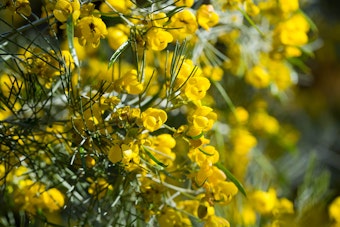
Green Feathery Senna
- Uses: Green Feathery Senna (Senna artemisioides) adds texture to desert gardens with its bright yellow flowers.
- Growth Habit: Fast-growing shrub up to 6 feet.
- Color: Feathery, green foliage.
- Fruit: Produces legume-like pods.
- Soil: Well-draining.
- Light: Full sun.
- Water: Drought tolerant; infrequent watering needed.
- Pruning: Occasional pruning to maintain shape.
- Hardiness: Hardy in desert climates.
- Other: Minimal care required beyond basic setup.
Jojoba
- Uses: Jojoba (Simmondsia chinensis) is a landscape shrub that is also commercially grown for its oil.
- Growth Habit: Slow-growing, reaching up to 6 feet.
- Color: Leathery green leaves.
- Fruit: Female plants produce seed capsules.
- Soil: Well-draining, tolerates poor soils.
- Light: Full sun.
- Water: Minimal once established.
- Pruning: Little to no pruning needed.
- Hardiness: Extremely drought-resistant.
- Other: Dioecious, needing male and female plants for seed production.
Little Leaf Cordia
- Uses: Little Leaf Cordia (Cordia parvifolia) is popular for its ornamental white flowers and silvery foliage.
- Growth Habit: Evergreen shrub, up to 5 feet tall and wide.
- Color: Silvery leaves with white, trumpet-shaped flowers.
- Fruit: Rarely produces noticeable fruit.
- Soil: Adapts to a variety of soils; prefers well-draining.
- Light: Full sun.
- Water: Extremely drought tolerant.
- Pruning: Minimal pruning required.
- Hardiness: Suitable for hot, dry climates.
- Other: Blooms heavily in spring and intermittently throughout the year.
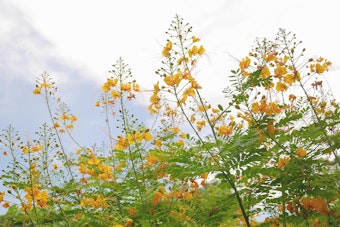
Mexian Bird of Paradise
- Uses: Mexican Bird of Paradise (Caesalpinia mexicana) is used as a decorative tree or shrub for its lush foliage and yellow flowers.
- Growth Habit: Grows as a large shrub or small tree, up to 10 feet.
- Color: Green leaves with bright yellow flowers.
- Fruit: Produces leguminous pods.
- Soil: Well-draining.
- Light: Full sun.
- Water: Moderate watering needs.
- Pruning: Prune to shape and remove spent flowers.
- Hardiness: Thrives in warm climates.
- Other: Flowers from spring to fall, adding long-lasting color.
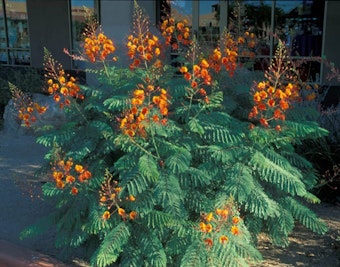
Red Bird of Paradise
- Uses: Red Bird of Paradise (Caesalipinia pulcherrima) is know for ornamental use for its showy, colorful flowers.
- Growth Habit: Shrub growing up to 6 feet.
- Color: Fern-like leaves with red, orange, and yellow flowers.
- Fruit: Pod-like fruits that may require cleanup.
- Soil: Prefers well-draining soil.
- Light: Full sun.
- Water: Drought tolerant but prefers regular watering during growth.
- Pruning: Prune back in late winter.
- Hardiness: Handles heat well.
- Other: Attracts hummingbirds and butterflies.
Sugar Bush - Currently Unavailable
- Uses: Sugar Bush (Rhus ovata) is a native plant used for screening and natural landscaping.
- Growth Habit: Evergreen shrub, up to 8 feet tall.
- Color: Dark green, leathery leaves with pinkish-white flowers.
- Fruit: Small, reddish-brown fruits.
- Soil: Well-draining.
- Light: Full sun to partial shade.
- Water: Very low water needs.
- Pruning: Minimal pruning required.
- Hardiness: Extremely drought tolerant.
- Other: Suitable for xeriscapes and wild gardens.
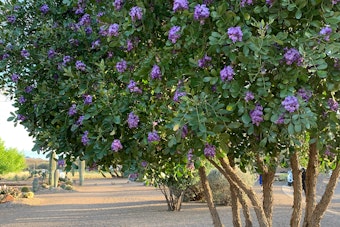
Texas Mountain Laurel
- Uses: Texas Mountain Laurel (Sophora secundiflora) is an ornamental tree/shrub with fragrant flowers and dense foliage.
- Growth Habit: Slow-growing, up to 15 feet tall.
- Color: Glossy, dark green leaves with deep purple flowers.
- Fruit: Produces decorative but toxic seeds.
- Soil: Well-draining, alkaline preferred.
- Light: Full sun to partial shade.
- Water: Drought tolerant once established.
- Pruning: Little to no pruning necessary.
- Hardiness: Very hardy in desert conditions.
- Other: Flowers emit a strong, sweet fragrance resembling grapes.
Texas Sage
- Uses: Texas Sage (Leucophyllum frutescens) is popular in desert landscapes for its silver foliage and purple flowers.
- Growth Habit: Dense shrub, up to 5 feet tall and wide.
- Color: Silvery leaves with purple flowers.
- Fruit: Non-significant.
- Soil: Well-draining.
- Light: Full sun.
- Water: Very drought tolerant.
- Pruning: Prune to shape if desired; generally low maintenance.
- Hardiness: Thrives in hot, dry climates.
- Other: Flowers respond to increased humidity and rain.
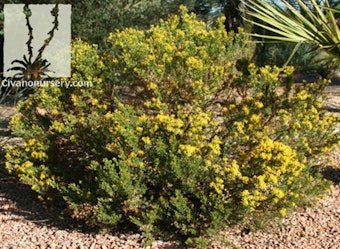
Turpentine Bush
- Uses: Turpentine Bush (Ericameria laricifolia) is ideal for rock gardens and natural desert landscapes.
- Growth Habit: Compact shrub, about 3 feet tall.
- Color: Needle-like leaves with bright yellow flowers.
- Fruit: Small, inconspicuous.
- Soil: Prefers poor, rocky soils.
- Light: Full sun.
- Water: Extremely drought-resistant.
- Pruning: Minimal pruning required.
- Hardiness: Very hardy in desert conditions.
- Other: Blooms in late summer to fall, providing late-season color.
Visit your local SummerWinds Nursery to explore a wide variety of plants that grow well in our desert environment. Our Trusted Garden Advisors are happy to answer any questions and help you find the perfect addition to your garden! Selection varies by season and location.

